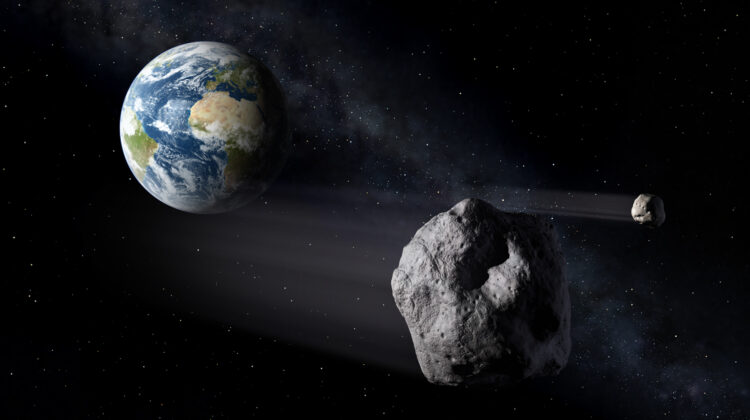
In the realm of space exploration, where each mission pushes the boundaries of our understanding, NASA’s OSIRIS-REx stands as a testament to human ingenuity and curiosity. This remarkable spacecraft has embarked on a journey of historic proportions, poised to make history as the first-ever US mission to bring a piece of an asteroid back to Earth.
Almost three years have passed since OSIRIS-REx made contact with the surface of asteroid Bennu, a spinning top-shaped celestial body measuring about half a kilometer in width. While it might be labeled as one of the most “potentially hazardous” asteroids known to us, there’s no immediate cause for alarm. Bennu, frozen in time since the birth of the Solar System, holds untold secrets waiting to be unraveled. In particular, studying its properties could offer invaluable insights into the early days of our solar neighborhood. Some even speculate that asteroids like Bennu may have delivered water and the fundamental building blocks of life to Earth.

The OSIRIS-REx mission team has been meticulously preparing for this moment for months, rehearsing the retrieval process with unwavering dedication. The climactic moment is set for September 24, approximately 8:42 AM local time (2:42 PM UTC), when the spacecraft’s capsule will re-enter Earth’s atmosphere and, aided by a parachute, gently descend to the Utah desert. Safeguarding the integrity of the collected sample is paramount. Once on Earth, the capsule will be transported to a specially designed facility, where meticulous procedures will unfold. Components like the heat shield and back shell will be carefully removed, and nitrogen will be employed to eliminate any traces of oxygen and moisture from the sample canister.
From the Utah desert, the precious cargo will commence its journey to NASA’s Johnson Space Center, where the real scientific exploration begins. Inside a specialized cleanroom and a glovebox, the sample will be opened and scrutinized. Portions of it will be allocated to research institutes seeking to unlock its mysteries. While the mission team initially aimed to collect a minimum of 60 grams of material, they have far exceeded their expectations. NASA estimates that OSIRIS-REx may have gathered between 400 and 1,000 grams (14-35 ounces) of this extraterrestrial treasure, ensuring ample material for in-depth study.
Among the eager scientists awaiting the arrival of the Bennu sample is Brother Bob Macke, the curator of meteorites at the Vatican Observatory. He has developed a pycnometer, a device designed to measure the volume, density, and porosity of cosmic material. This innovative tool will play a pivotal role in decoding the story of Bennu’s origins. Interestingly, OSIRIS-REx’s mission uncovered unexpected terrain on the asteroid. Instead of the anticipated sandy soil, the spacecraft encountered a landscape strewn with boulders. The finer material, ideal for collection, was nestled within craters and depressions, prompting a daring maneuver.
OSIRIS-REx’s principal investigator, Dante Lauretta, recalled the moment of revelation when 3D stereoscopic images, produced by astrophysicist Brian May and collaborator Claudia Manzoni, unveiled a safe landing spot within a treacherous crater. The images, showcased in a stereoscopic book authored by May and Lauretta, illuminated the asteroid’s unique structure, guiding the spacecraft to its successful collection site.
Bennu’s distinct composition, resembling a cosmic time capsule, makes it an ideal target for the first US asteroid sample-return mission. As a relic from the dawn of the Solar System, it holds the potential to unveil invaluable insights into the conditions prevailing during our planetary system’s formation. Furthermore, the sample from Bennu will provide critical context for meteorite research. While meteorites from the Moon and Mars are well-documented, those originating from asteroids remain enigmatic. Understanding the type of asteroids they hail from and their locations in the Solar System will help fill these gaps in our knowledge.
Professor Sara Russell, a member of the OSIRIS-REx Sample Analysis Team from the Natural History Museum in London, emphasized the significance of space missions like OSIRIS-REx. She likened them to fieldwork for meteoricists, offering a vital next step in expanding our understanding of meteorites and their role in the Solar System’s early history.

Following the return of its precious cargo, the mission will undergo a transformation, becoming OSIRIS-APEX. Its next destination is asteroid Apophis, set to be reached in 2029, promising more groundbreaking discoveries on the horizon.
In the grand tapestry of space exploration, OSIRIS-REx stands as a shining example of human curiosity, innovation, and collaboration. As we eagerly await the unveiling of Bennu’s secrets, we’re reminded of the endless possibilities that the cosmos holds, waiting to be unlocked by missions like this one.

Leave a Reply